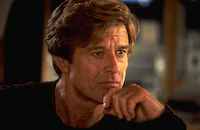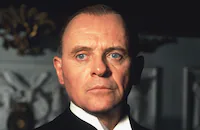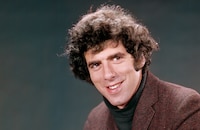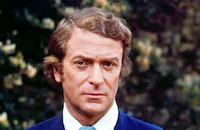A Bridge Too Far

Brief Synopsis
Cast & Crew
Richard Attenborough
Sean Connery
Robert Redford
Laurence Olivier
Mark Sheridan
Timothy Morand
Film Details
Technical Specs
Synopsis
The story of the Allied defeat at Arnhem in 1944.
Cast

Sean Connery

Robert Redford

Laurence Olivier
Mark Sheridan
Timothy Morand
Jack Galloway
Mary Smithuysen
Brian Haughton
John Stride
Ray Boyd
George Innes
Simon Chandler
Ben Howard
Jack Mckenzie
Richard Ommaney
Jonathon Hackett
Michael Wolf
David Auker
Tim Beekman
Ferd Wiliams
Ben Cross
Harry Ditson

Wolfgang Preiss
Jason White
Ray Jeers
David English
Michael Graves
Barry Mccarthy
Stephen Moore
Patrick Ryecart
Michael Stock
Edward Fox

James Caan
Frank Grimes
Peter Quince
Brian Hawksley
Shaun Curry
Hartmut Becker
Gerald Sim
Walter Kohut
John Peel
John Ratzenberger
Henny Alma
Hilary Minster
Stephen Churchett
Michael Bangerter
Nicholas Campbell
Milton Cadman
Robin Scobey
Paul Vaughan-teague
David Killick

Anthony Hopkins
Paul Maxwell
Don Douglas
Edward Seckerson
James Wardroper
Sebastian Abineri
Niall Padden
John Morton
Farrell Sheridan
Alun Armstrong
Dan Lon
Stuart Blake

Maximilian Schell
Patrick Dickson
Paul Rattee

Dirk Bogarde

Gene Hackman
Feliks Arons
Erik Van't Wout
Ian Liston
Tom Van Beek
Michael Byrne
Hans Croiset
Neil Kennedy
Edward Kalinski
Josephine Peeper
Andrew Branch
Paul Copley
Dick Rienstra
Christopher Good
Brian Gwaspari
Garrick Hagon
Adrian Gibbs
Mark York
Erik Chitty
Richard Kane
Stephen Rayment
John Judd
Pieter Groenier

Liv Ullmann
Lex Van Delden

Ryan O'neal
Hans Von Borsody
Jeremy Kemp
Jason Gregory
Peter Settelen
Toby Salaman
Tony Mchale
Philip Raymond
Bertus Botterman
Anthony Pullen

Hardy Kruger
Frank Jarvis
Peter Gordon
Norman Gregory
Jon Croft

Elliott Gould
Michael Graham Cox
Edward Mcdermott
James Snell
Adrienne Kleiweg

Michael Caine
Stanley Lebor
Georgette Reyevski
Johan Te Slaa
Geoffrey Hinsliff

Arthur Hill
Donald Pickering
Keith Drinkel
Myles Reithermann
Anthony Howden
Anthony Garner

Denholm Elliott
Anthony Milner
Francis Mughan
Colin Farrell
Sean Mathias
John Salthouse
Gerald Martin
David Stockton
Chris Williams
Patrick Hannaway
Peter Faber
Siem Vroom
Stewart Guidotti
Crew
John Addison
Bill Aylmore
Richard Bamber
Bert Batt
Robin Browne
Roy Button
Joe Caroff
Terence A Clegg
Sheila Colins
Stuart Craig
Peter Dukelow
J D Frost
James H Gavin
Anthony Gibbs
William Goldman
Frank A Gregg
Peter Horrocks
Peter Howitt
Gerry Humphreys
Judy Humphreys
Alf Joint
Alf Joint
Gabriel Katzka
Simon Kaye
Steve Lanning
Joseph E. Levine
Richard P Levine
Peter Macdonald
Charles Mann
Terence Marsh
Anthony Mendelson
Robin O'donoghue
Loretta Ordewer
John Palmer
John Partington-smith
Eric Rattray
John Richardson
Cornelius Ryan
Geoffrey Ryan
Kathryn Morgan Ryan
Ronnie Sloan
Tom Smith
Michael Stanley-evans
Roy Stannard
David Tomblin
Alan Tomkins
Jack Towns
Geoffrey Unsworth
Geoffrey Unsworth
Cornelius Van Eijk
J O E Vandeleur
Wally Veevers
Dena Vincent
J L Waddy
Peter Waller
David Waterston
Harry Waxman
Les Wiggins
Connie Willis
Videos
Movie Clip



Trailer
Hosted Intro
Film Details
Technical Specs
Articles
A Bridge Too Far
With only his third film as a director, Richard Attenborough undertook one of the most massive productions in film history, A Bridge Too Far (1977). For the then-astronomical cost of $26 million, he and producer Joseph E. Levine set out to re-create Operation Market-Garden, one of the biggest disasters in military history. In September 1944, the Allies tried to bring World War II to an early end by parachuting 35,000 troops into Holland to secure six bridges leading to Germany. Through a combination of bad weather, worse luck, and even worse planning, they lost almost half their troops and never made it over that last bridge. But the heroic efforts of the men and women on the ground, in stark contrast to the poor planning of their leaders, stand as a testament to the brotherhood of the battlefield.
Levine wasn't taking any chances with his investment. A Bridge Too Far was adapted from a book by historical writer Cornelius Ryan, whose work had earlier inspired 20th Century-Fox's mega-hit The Longest Day (1962). To bring to life this powerful true story, he cast "14 international superstars" in key roles - including Oscar-winners Gene Hackman, Laurence Olivier, and Maximilian Schell, and future Oscar-winners Michael Caine, Sean Connery, and Anthony Hopkins - then sent many of them to the actual locations in Holland where the events had taken place.
His choice of Attenborough as director may have seemed a little more chancy, but it wasn't totally out of the blue. After years of acclaim as a stage and screen actor, Attenborough had turned to film direction with another look at military madness, the 1969 World War I musical Oh! What a Lovely War. He'd continued his personal take on modern warfare with Young Winston (1972), a look at Winston Churchill's early military career. Then he set out to find backing for his dream project, a film biography of Mahatma Gandhi. Levine's interest in the subject brought them together. Though he ultimately passed on Gandhi (1982), Levine signed Attenborough to a two-picture deal that kept him busy while raising money for his own film about the Indian political and spiritual leader. A Bridge Too Far was their first picture together, followed by the 1978 thriller Magic. Four years later, Attenborough would produce his masterpiece, winning both Best Picture and Best Director Oscars for Gandhi.
Levine's all-star casting of A Bridge Too Far was praised by several critics for helping audiences keep track of the several plot strands unraveling through the course of the three-hour film. Among those earning strong reviews for their work were Anthony Hopkins, James Caan, and Edward Fox, who won the British Academy Award and the National Society of Film Critics Award for Best Supporting Actor. For many critics, along with those working on the film, the highlight was Laurence Olivier. Olivier was in the middle of a career resurgence following a bout with ill health. He had recently won an Emmy for Love Among the Ruins (1975), with Katharine Hepburn, and an Oscar nomination for Marathon Man (1976). At the time he filmed his role in A Bridge Too Far, he was involved in a series of filmed plays for British television, many of which aired in the U.S. as well. In fact, between scenes on location, he flew to England to co-star with Natalie Wood, Robert Wagner, and Maureen Stapleton in Cat on a Hot Tin Roof. In contrast to his position as Lord Olivier, he showed up on the set wearing an old suit and a pair of battered black shoes. He informed Attenborough that he had been gardening in the shoes for a month so that they would look just right for the character, a Dutch farmer and doctor who risks his life to tend the wounded.
Producer: Joseph E. Levine, Richard Levine, Michael Stanley-Evans
Director: Richard Attenborough
Screenplay: William Goldman
Based on the book by Cornelius Ryan
Cinematography: Geoffrey Unsworth, Harry Waxman
Art Direction: Terence Marsh, Roy Stannard, Stuart Craig, Alan Tompkins
Music: John Addison
Principal Cast: Dirk Bogarde (Lt. Gen. Frederick Browning), James Caan (Staff Sgt. Eddie Dohun), Michael Caine (Lt. Col. "Joe" Vandeleur), Sean Connery (Major Gen. Robert Urquhart), Edward Fox (Lt. Gen. Brian Horrocks), Elliott Gould (Col. Bobby Stout), Gene Hackman (Major Gen. Stanislaw Sosabowski), Anthony Hopkins (Lt. Col. John Frost), Laurence Olivier (Dr. Spaander), Ryan O'Neal (Brig. Gen. James M. Gavin), Robert Redford (Major Julian Cook), Maximilian Schell (Lt. Gen. Wilhelm Bittrich), Liv Ullmann (Kate Ter Horst).
C-177m. Letterboxed.
by Frank Miller

A Bridge Too Far
Quotes
What can you see?- Field Marshal Model
Nothing. But they're going to try a river assault.- General Ludwig
It will fail.- Field Marshal Model
Of course. But what do we do if it doesn't?- General Ludwig
Sir.- Corporal Hancock
Hancock. I've got lunatics laughing at me from the woods. My original plan has been scuppered now that the jeeps haven't arrived. My communications are completely broken down. Do you really believe any of that can be helped by a cup of tea?- Major General Urquhart
Couldn't hurt, sir.- Corporal Hancock
What's the best way to take a bridge?- Brigadier General Gavin
Both ends at once.- Maj. Julian Cook
I'm sending two companies across the river by boat. I need a man with very special qualities to lead.- Brigadier General Gavin
Go on, sir.- Maj. Julian Cook
He's got to be tough enough to do it and he's got to be experienced enough to do it. Plus one more thing. He's got to be dumb enough to do it... Start getting ready.- Brigadier General Gavin
I've just been on to Monty. He's very proud and pleased.- Lt. General Frederick 'Boy' Browning
Pleased?- Major General Urquhart
Of course. He thinks Market Garden was 90% successful.- Lt. General Frederick 'Boy' Browning
But what do you think?- Major General Urquhart
Well, as you know, I always felt we tried to go a bridge too far.- Lt. General Frederick 'Boy' Browning
Everyone knows you have never lost a battle.- Major General Gunther Blumentritt
I'm still young, give me time.- Field Marshall Gerd von Runstedt
Trivia
The producers were only able to locate four of the many Sherman tanks seen on the screen. The rest were plastic molds set on top of VW Beetle chassis. The tank treads didn't reach the ground, but the film is edited so that this isn't noticeable.
Originally rated "R" by the MPAA for strong language, it was lowered to "PG" upon appeal.
There are 13 Oscar-winners associated with the movie, six of them actors (though none earned their Academy Awards for this picture).
Despite the film being made over thirty years after the actual battle, a number of its principle characters were able to be employed as military consultants during production. The list of people includes: Brian Horrocks (Fox), James Gavin (O'Neal), J.O.E. Vandeleur (Caine), John Frost (Hopkins), and R.E. Urquhart (Connery).
'Steve McQueen' and Audrey Hepburn were originally cast to play Major Julian Cook and Kate Ter Horst repectively. But they were dropped when Hepburn's asking salary price was too high, and McQueen only wanted to appear in starring roles, not all-star assembled projects.
Miscellaneous Notes
Released in United States 1977
Released in United States 1977

















